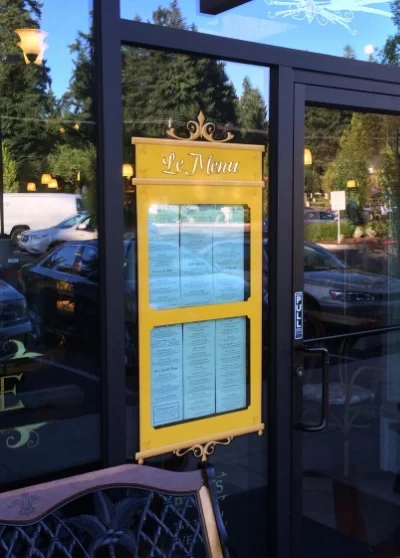At this point in the evolution of website customer service, there can be little doubt that live chat has been a success. Thousands of businesses use live chat. Live Person is publicly traded. Zendesk, which recently had its IPO, now offers Zendesk Chat. Businesses can choose from numerous inexpensive alternatives like Live Chat, Olark and SnapEngage. While phone support is in decline, live chat is the heir apparent in the world of website customer service.
However, there is still room for improvement. Despite live chat’s success, there remain drawbacks for end-users and businesses alike. Fortunately, these drawbacks can be remedied with an exciting new approach that couples website self-service and live chat assisted-service. Before describing this powerful new combination, let’s first understand the drawbacks of live chat this new combination remedies.
Not a silver bullet for end-users
Too often, live chat lets down end-users because it is unavailable—a potential drawback of any assisted-service solution. Live chat also requires time and effort. A study by Forrester showed that the average live chat session takes 10 minutes. Most of this 10 minutes is spent establishing common ground, which is when end-users have to describe their current situation and what they’re trying to do. During the grounding process, it is common for end-users to wait 30 or more seconds between responses from live chat agents. This delay is required to make live chat economically feasible: agents chat with 2-4 customers at a time.
Initiating a live chat session is also an experience that can be improved. Companies have learned that they can increase live chat engagement from about 0.1% to 1.0% of visitors by proactively interrupting end-users with a pop-up window offering to chat. Proactive interruption increases engagement, but it often annoys end-users. A study by LogMeIn in 2010 found that a whopping 72% of respondents felt neutral-to-negative about proactive chat interruptions. A Forrester blog post reported that 73% of visitors disliked being interrupted by live chat.
Another frustrating aspect when initiating live chat is having to fill out a form with many fields before the live chat session can begin. Such a tactic is taken not for end-users’ benefit, but to enable businesses to route live chats to suitable agents before sessions begin.
Business benefits sometimes less than they seem
Live chat brings many benefits to business, but some of these benefits warrant closer examination. For example, I routinely hear businesses say their live chat enjoys a 20% conversion rate with customers. That’s pretty good, but it is nearly meaningless by itself. Another number must accompany it. That number is engagement: What percentage of visitors to a website actually use live chat in the first place? If 1% of visitors use live chat, and 20% of those convert, that’s 20 conversions out of 10,000. By comparison, a website self-service solution like AnswerDash gets 8% conversion but 5% engagement, giving it twice as many conversions as live chat, or 40 out of 10,000. Conversion rate must be coupled with engagement to be meaningful.
For businesses, the main cost associated with any live chat service is not the subscription fee, but the cost to staff the service in the first place. Return-on-investment calculations for live chat have to take employee time, salary, and benefits into account. Often, a solid ROI can only be met by assuming live chat agents are active with multiple end-users at once, causing response delays.
Front-ending live chat with website self-service
The good news is that there is a new powerful way to remedy the user experience and business drawbacks of live chat: Couple live chat assisted-service with website self-service. If you place a website self-service solution in front of live chat, end-users can answer their common questions under their own power and escalate to live chat only when needed. This approach has three major benefits:
A better user experience.
Increased conversion.
Reduced support costs.
To understand how these benefits arise, we must first understand questions-and-answers on websites. It turns out Q&A follows an 80/20 rule called a Pareto distribution, where a small percentage of questions—the most common ones—comprise a large percentage of the questions asked. These common questions are precisely the ones that a website self-service solution can answer, saving businesses from having to answer them through more expensive assisted channels like live chat.

Think about the menu posted by fancy restaurants out front on the sidewalk. Prospective diners can answer many questions for themselves using this menu. What cuisine is served? What is the price of an entrée? What are the hours of operation? Think how many interruptions are avoided for the host at the front desk as a result of the posted menu. Whenever a customer needs more personalized service, they can escalate to assisted-service by stepping inside the restaurant and speaking with the host.
So how does website self-service act like the posted menu? A self-service solution like AnswerDash can be put in front of your live chat solution, serving customers by providing answers to the most common questions—the “80” part of the “80/20.” Millennials, in particular, prefer to self-serve instead of asking for assisted-service. User experience is improved, as customers can help themselves any time of day. Conversion rates increase because customers can get the answers they need through self-service, and those customers that enter live chat are better qualified sales leads. Support costs are reduced because fewer live chat agents are needed.
AnswerDash makes your live chat more effective
AnswerDash can serve as the posted street menu for your live chat, providing instant self-service answers to visitors in a matter of seconds, and handing off to assisted-service when customers want it. The result is that fewer live chat agents are needed, live chat conversion rates go up, live chat ROI is improved, and 80% of end-users can get self-service answers quickly and easily without having to endure a live chat session. By front-ending your live chat with AnswerDash self-service, everybody wins, especially the end-user, who ultimately is the most important winner of all.




